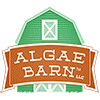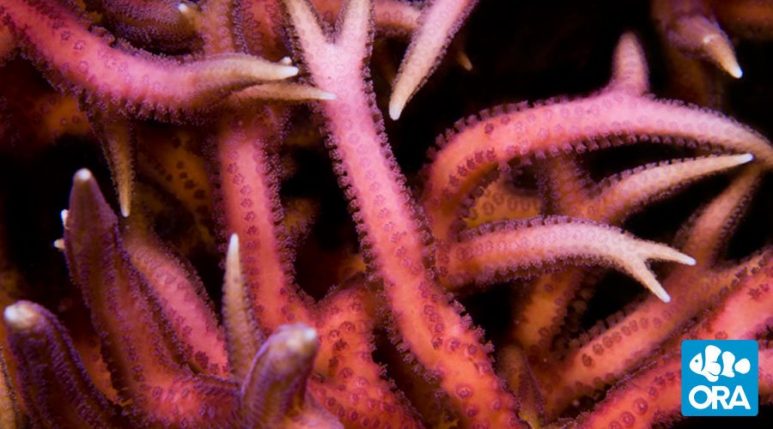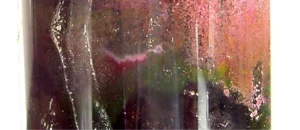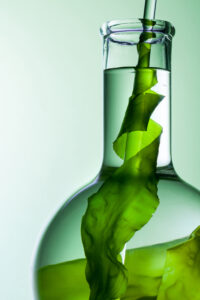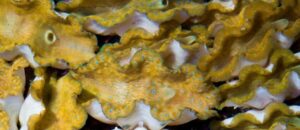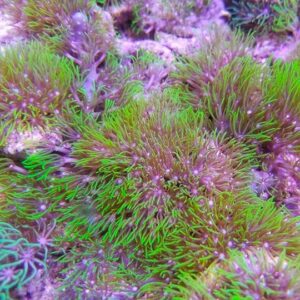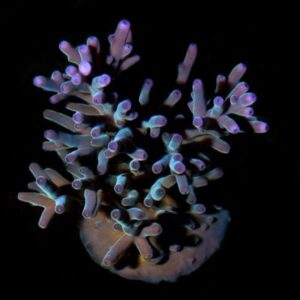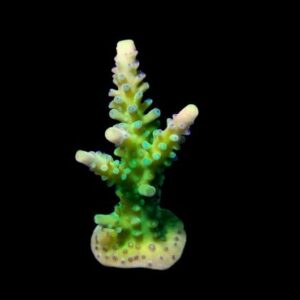Description
Seriatopora, commonly known as Birdsnest, can be found all over the Indo-Pacific. It can be in locations around Australia, in the Red Sea, and off the coast of Eastern Africa. The magnificent frags of Pink Birdsnest coral sold here are aquacultured by ORA. This means that they are grown in aquariums instead of being collected from the ocean. Aquacultured corals have benefits that will be explained below. The Pink Birdsnest is bright pink with thin branches and pointed growth tips. The lower branches tend to grow out then curve down, giving large colonies a “weeping willow”‘ appearance.
Birdsnest corals are generally easy to care for as far as SPS corals go. Still, they require some knowledge. We’ll go over the basics here. First, the Pink Birdsnest requires medium to high light to display the best coloration. Unlike the green Birdsnest, which will have relatively the same appearance regardless of having low or high light, this coral may lose its color under low light. Be sure to acclimate it to higher light first by slowly moving it up the rockscape, starting at the bottom. This is especially important if you plan on keeping this coral under particularly high lighting. When it comes to flow, this coral is like most SPS corals. It prefers moderate to strong flow. You don’t want to give so much flow that the coral is blown away or broken, but you should give enough to avoid detritus settling on it. Flow also provides the coral with needed nutrients and elements. It is best to provide random and irregular flow to avoid dead spots and to encourage proper growth.
Birdsnest corals need at least somewhat stable levels of calcium, alkalinity, and magnesium. This coral isn’t as picky with these levels as Acropora, but you should still keep them as stable as possible. Your other corals will appreciate it too! Keep your temperature at 72-78 degrees Fahrenheit. Your nitrates should stay within 1-5 ppm and your phosphates should be just barely detectable but not 0. Concerning feeding, this coral is not something you should go out of your way to feed. Actually, feeding this coral can be counterproductive because the polyps are so small. You will likely be bringing your nutrient levels up more than anything. Like most common aquarium corals, the Pink Birdsnest contains zooxanthellae, which is a photosynthetic algae. The zooxanthellae within the coral provides it with most of its nutritional needs. However, the coral will consume phytoplankton and other microfauna out of the water column, so feeding phytoplankton can be beneficial. This method is great because it feeds the coral without causing nutrient spikes.
Care requirements
Purchase Size: 1 – 2″
Placement: Middle to top.
Lighting: Medium to high
Flow: Moderate to strong
Parameters: 72-78° F, dKH 8-12, pH 8.1-8.4, salinity 32-35 ppt
Calcium: 350-450 ppm
Alkalinity: 8-12 dKH
Magnesium: 1,250-1,350 ppm
More Information
Aquacultured corals are more likely to survive and flourish in your aquarium. This is because they are grown in aquariums, making them well adapted to aquarium conditions such as lighting, flow, and water chemistry. They are also overall hardier than corals collected from the ocean. Aquacultured coral are also far less likely to carry pests or diseases, though you should still dip and/or quarantine them just in case. On top of all that, aquacultured corals are more sustainable and environmentally friendly.
